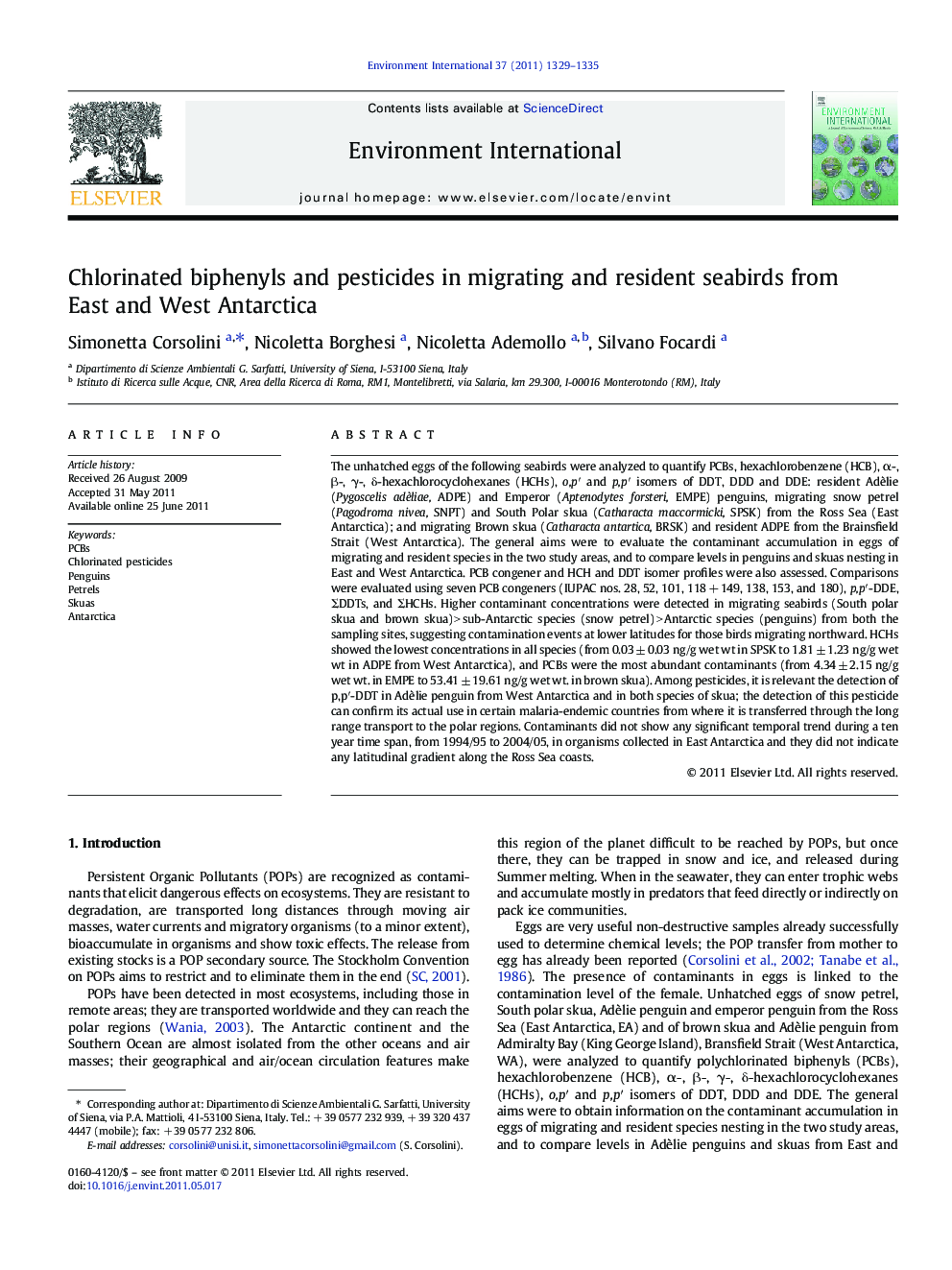| کد مقاله | کد نشریه | سال انتشار | مقاله انگلیسی | نسخه تمام متن |
|---|---|---|---|---|
| 4423253 | 1308817 | 2011 | 7 صفحه PDF | دانلود رایگان |

The unhatched eggs of the following seabirds were analyzed to quantify PCBs, hexachlorobenzene (HCB), α-, β-, γ-, δ-hexachlorocyclohexanes (HCHs), o,p′ and p,p′ isomers of DDT, DDD and DDE: resident Adèlie (Pygoscelis adèliae, ADPE) and Emperor (Aptenodytes forsteri, EMPE) penguins, migrating snow petrel (Pagodroma nivea, SNPT) and South Polar skua (Catharacta maccormicki, SPSK) from the Ross Sea (East Antarctica); and migrating Brown skua (Catharacta antartica, BRSK) and resident ADPE from the Brainsfield Strait (West Antarctica). The general aims were to evaluate the contaminant accumulation in eggs of migrating and resident species in the two study areas, and to compare levels in penguins and skuas nesting in East and West Antarctica. PCB congener and HCH and DDT isomer profiles were also assessed. Comparisons were evaluated using seven PCB congeners (IUPAC nos. 28, 52, 101, 118 + 149, 138, 153, and 180), p,p′-DDE, ΣDDTs, and ΣHCHs. Higher contaminant concentrations were detected in migrating seabirds (South polar skua and brown skua) > sub-Antarctic species (snow petrel) > Antarctic species (penguins) from both the sampling sites, suggesting contamination events at lower latitudes for those birds migrating northward. HCHs showed the lowest concentrations in all species (from 0.03 ± 0.03 ng/g wet wt in SPSK to 1.81 ± 1.23 ng/g wet wt in ADPE from West Antarctica), and PCBs were the most abundant contaminants (from 4.34 ± 2.15 ng/g wet wt. in EMPE to 53.41 ± 19.61 ng/g wet wt. in brown skua). Among pesticides, it is relevant the detection of p,p′-DDT in Adèlie penguin from West Antarctica and in both species of skua; the detection of this pesticide can confirm its actual use in certain malaria-endemic countries from where it is transferred through the long range transport to the polar regions. Contaminants did not show any significant temporal trend during a ten year time span, from 1994/95 to 2004/05, in organisms collected in East Antarctica and they did not indicate any latitudinal gradient along the Ross Sea coasts.
Research highlights
► Legacy POPs higher in migrant than resident seabirds from East and West Antarctica.
► No temporal trend observed from 1994/95 to 2004/05.
► POP levels rather homogeneous in Antarctic seabirds.
► p,p′-DDT found in penguin eggs.
► HCB made up approximately 15–35% of the studied POP residue.
Journal: Environment International - Volume 37, Issue 8, November 2011, Pages 1329–1335